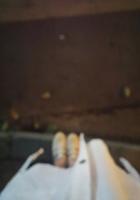In the spring of that year I had got to a flying machine that lacked nothing but longitudinal stability. My model flew like a bird for fifty or a hundred yards or so, and then either dived and broke its nose or, what was commoner, reared up, slid back and smashed its propeller. The rhythm of the pitching puzzled me. I felt it must obey some laws not yet quite clearly stated.
I became therefore a student of theory and literature for a time;
I hit upon the string of considerations that led me to what is called Ponderevo's Principle and my F.R.S., and I worked this out in three long papers. Meanwhile I made a lot of turn-table and glider models and started in upon an idea of combining gas-bags and gliders. Balloon work was new to me. I had made one or two ascents in the balloons of the Aero Club before I started my gasometer and the balloon shed and gave Cothope a couple of months with Sir Peter Rumchase. My uncle found part of the money for these developments; he was growing interested and competitive in this business because of Lord Boom's prize and the amount of reclame involved, and it was at his request that I named my first navigable balloon Lord Roberts Alpha.
Lord Roberts A very nearly terminated all my investigations. My idea both in this and its more successful and famous younger brother, Lord Roberts B, was to utilise the idea of a contractile balloon with a rigid flat base, a balloon shaped rather like an inverted boat that should almost support the apparatus, but not quite. The gas-bag was of the chambered sort used for these long forms, and not with an internal balloonette. The trouble was to make the thing contractile. This I sought to do by fixing a long, fine-meshed silk net over it that was fastened to be rolled up on two longitudinal rods. Practically I contracted my sausage gas-bag by netting it down. The ends were too complex for me to describe here, but I thought them out elaborately and they were very carefully planned. Lord Roberts A was furnished with a single big screw forward, and there was a rudder aft. The engine was the first one to be, so to speak, right in the plane of the gas-bag. I lay immediately under the balloon on a sort of glider framework, far away from either engine or rudder, controlling them by wire-pulls constructed on the principle of the well-known Bowden brake of the cyclist.
But Lord Roberts A has been pretty exhaustively figured and described in various aeronautical publications. The unforeseen defect was the badness of the work in the silk netting. It tore aft as soon as I began to contract the balloon, and the last two segments immediately bulged through the hole, exactly as an inner tube will bulge through the ruptured outer cover of a pneumatic tire, and then the sharp edge of the torn net cut the oiled-silk of the distended last segment along a weak seam and burst it with a loud report.
Up to that point the whole thing had been going on extremely well. As a navigable balloon and before I contracted it, the Lord Roberts A was an unqualified success. It had run out of the shed admirably at nine or ten miles an hour or more, and although there was a gentle southwester blowing, it had gone up and turned and faced it as well as any craft of the sort I have ever seen.
I lay in my customary glider position, horizontal and face downward, and the invisibility of all the machinery gave an extraordinary effect of independent levitation. Only by looking up, as it were, and turning my head back could I see the flat aeroplane bottom of the balloon and the rapid successive passages, swish, swish, swish of the vans of the propeller. I made a wide circle over Lady Grove and Duffield and out towards Effingham and came back quite successfully to the starting-point.
Down below in the October sunlight were my sheds and the little group that had been summoned to witness the start, their faces craned upward and most of them scrutinising my expression through field-glasses. I could see Carnaby and Beatrice on horseback, and two girls I did not know with them; Cothope and three or four workmen I employed; my aunt and Mrs. Levinstein, who was staying with her, on foot, and Dimmock, the veterinary surgeon, and one or two others. My shadow moved a little to the north of them like the shadow of a fish. At Lady Grove the servants were out on the lawn, and the Duffield school playground swarmed with children too indifferent to aeronautics to cease their playing.
But in the Crest Hill direction--the place looked extraordinarily squat and ugly from above--there were knots and strings of staring workmen everywhere--not one of them working, but all agape. (But now I write it, it occurs to me that perhaps it was their dinner hour; it was certainly near twelve.) I hung for a moment or so enjoying the soar, then turned about to face a clear stretch of open down, let the engine out to full speed and set my rollers at work rolling in the net, and so tightening the gas-bags. Instantly the pace quickened with the diminished resistance...
In that moment before the bang I think I must have been really flying. Before the net ripped, just in the instant when my balloon was at its systole, the whole apparatus was, I am convinced, heavier than air. That, however, is a claim that has been disputed, and in any case this sort of priority is a very trivial thing.
Then came a sudden retardation, instantly followed by an inexpressibly disconcerting tilt downward of the machine. That I still recall with horror. I couldn't see what was happening at all and I couldn't imagine. It was a mysterious, inexplicable dive. The thing, it seemed, without rhyme or reason, was kicking up its heels in the air. The bang followed immediately, and I perceived I was falling rapidly.















